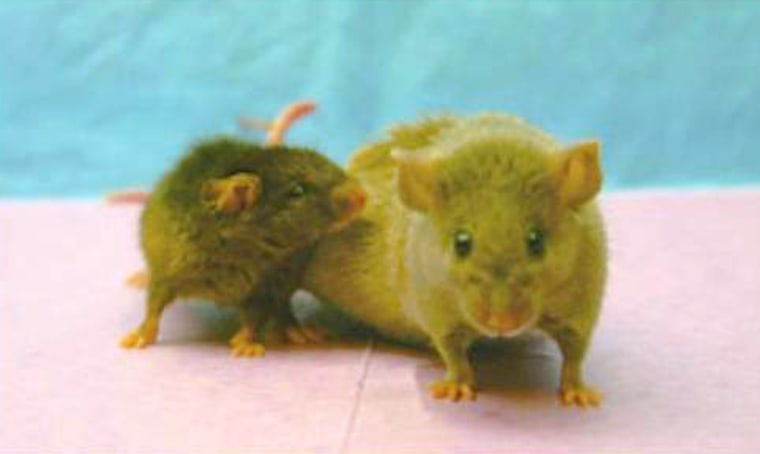Anyone debating the scientific feasibility of extending the human life span will find that it's only a matter of time before the name "Aubrey de Grey" comes up.
The controversial Cambridge University researcher has been making news in recent years by claiming that humans could soon enjoy thousand-year lifetimes and by helping to establish two contests: one to spur anti-aging research and another to debunk his own audacious claims.
In 2003, de Grey helped establish the Methuselah Foundation and create the M-Prize, a $1.5 million award available to any scientist who can slow or reverse the effects of aging in mice.
Private donations made since 2003 have bumped the prize value up to nearly $3.5 million, according to the latest update on the Methuselah Foundation website.
Just getting started
About $100,000 of award is reserved for a "Longevity Prize" that focuses on extending total lifespan; the hefty remainder of the award is reserved for a "Rejuvenation Prize," which aims to reverse the effects of aging in the elderly.
The unequal distribution of the money between the two prizes reflects the wishes of the donors, says Methuselah Foundation director David Gobel.
"People who happen to be alive want to be fixed," Gobel said.
The M-Prize has been awarded three times to date, all in 2004:
- The Longevity Prize went to Southern Illinois University researcher Andrzej Bartke for a mouse genetically modified mouse that lived for 1819 days, or nearly 5 years.
- The Rejuvenation Prize was won by Steve Spindler, a researcher at the University of California at Riverside, and his colleagues for a mouse that lived for 1,356 days, or about 3.7 years, due to caloric restriction.
- The foundation also awarded a no-longer-active "Reversal Prize" to animal breeder Sandy Keith for "Charlie," a mouse that lived to 1551 days without any kind of genetic or dietary intervention.
None of these previous winners received any substantial cash award; rather, their efforts were used to set the standard that future entries had to beat, Gobel said.
Both Bartke and Keith received $500 for their accomplishments; Spindler received a "Methuselah of champagne."
The M-Prize was modeled after the Ansari X Prize, a $10 million dollar award created to spur the creation of reusable manned spacecraft. The X Prize was won in October 2004 by Burt Rutan's SpaceShipOne.
In addition to sponsoring the M-Prize, de Grey has also put forward his own research proposal to slow the process of aging. Called "Strategies for Engineered Negligible," or SENS, de Grey's approach focuses on repairing the damage aging inflicts on our cells.
SENS is highly controversial among biogerontologists, or scientists who study aging. Many believe it is overly optimistic science fiction.
Prove me wrong
In response to the criticisms, de Grey teamed up with one of his detractors to create another contest — this time to debunk his own claims.
In July 2005, de Grey and the MIT-affiliated magazine Technology Review announced the SENS Challenge, a $20,000 award for anyone who can show that SENS is scientifically impossible.
"It seems absurdly far-fetched to me … but the plan behind the SENS Challenge is to give de Grey's idea a chance," said Jason Pontin, Technology Review's editor-in-chief.
The competition is open to any molecular biologist with a Ph.D. from a recognized institution. Submissions will be judged by a distinguished five-person panel that includes Craig Venter, who led the private effort to decode the human genome; and Nathan Myhrvold, a former chief technologist at Microsoft.
The SENS Challenge "was designed to shine some very bright lights on what was basically behind-closed-doors bad-mouthing of the hypotheses Aubrey was putting out," Gobel told LiveScience. "The thought was 'If you want to say something is wrong, then you ought to put your name on it.'"
The SENS Challenge award will be paid by matching funds from the Technology Review and the Methuselah Foundation. Pontin told LiveScience that numerous scientists have accepted the challenge and that the top submissions will be published in the magazine's July issue.
